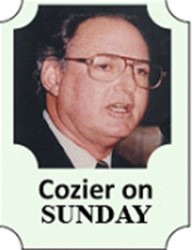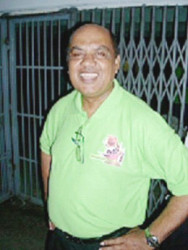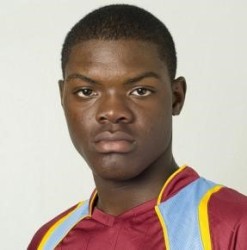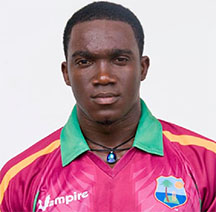It is not difficult to imagine Rangy Nanan going to his grave with a wry smile on his lips.
 The most successful bowler in West Indies cricket in a first-class career between 1973 and 1991, the heavy-set Trinidad and Tobago off-spinner was restricted to a solitary Test by the numerical strength of Clive Lloyd’s battering-ram attack that was the foundation of the team’s record 15 years without the loss of a series.
The most successful bowler in West Indies cricket in a first-class career between 1973 and 1991, the heavy-set Trinidad and Tobago off-spinner was restricted to a solitary Test by the numerical strength of Clive Lloyd’s battering-ram attack that was the foundation of the team’s record 15 years without the loss of a series.
Before his death on Wednesday, aged 62, after a lengthy battle against ill health, Nanan had witnessed the sharp decline in fast bowling stocks and the continuing, as yet, futile fixation with replenishing them to the disadvantage of spin.
Just days before his passing, Richard Pybus, the West Indies Cricket Board’s director of cricket, spoke of a series of camps and off-season training programmes for fast bowlers as ‘part of a plan to rekindle an area of the game that has been struggling in recent years’.
Memories of George John, George Francis, Manny Martindale and others of the early days still linger alongside those of Hall and Griffith, Lloyd’s formidable group and Ambrose and Walsh of the modern era.
The only regular fast bowlers in the Test team at present are Jerome Taylor and Kemar Roach, both with over 100 wickets at the highest level, yet their effectiveness is waning. In the three most recent Tests in Australia, Taylor’s two wickets cost 128.5 each, Roach took none at all.

‘This is going to be central to us getting that (fast bowling) back at the heart of West Indies cricket again,’ Pybus said.
Alzarri Joseph and Chemar Holder were at the ‘heart’ of the under-19s World Cup triumph in Bangladesh last January. They are ones Pybus’ plan is likely to bring on. Others are not immediately evident.
Last July, the WICB charged its cricket committee with coming up with ways ‘to prioritize the development of fast bowlers in the region and for the West Indies team, recognizing that the majority of the overs in regional tournaments are bowled by spinners and is impacting negatively on the production of fast bowlers for the West Indies team’.
Nothing was heard from the committee until Pybus, the Englishman with previous coaching stints in Pakistan, Bangladesh, revealed the WICB’s proposals. They sounded very much as if there is to be no place for Nanan’s successors.
At least he could take satisfaction from the surprisingly secure place of spin bowling in Twenty20, the game’s newest and shortest format, typified

by its role in the current ICC World tournament in Bangladesh.
Nanan’s one Test was against in Pakistan in 1980 when there was the inevitable presence of five fast bowlers – Colin Croft, Joel Garner, Sylvester Clarke, Malcolm Marshall and Michael Holding. An injury to his right shoulder diving for a return catch in the first of three ODIs eliminated Holding for the remaining matches.
Nanan broke the sequence in the second Test in Faisalabad. Ironically, it was the only Test of four that produced an outright result in a low-scoring series, the West Indies prevailing by 156 runs; his contributions were two wickets in each innings. He was never picked again. Imtiaz Ali, a leg-spinner who was Nanan’s contemporary, had the same treatment after his only Test against India in Port-of-Spain in 1976.

Nikita Miller, the consistent Jamaican left-arm spinner who passed 400 first-class wickets in the 2015-16 Professional Cricket League (PCL), is Nanan’s modern equivalent. He was dropped after one Test in 2009 and never recalled. Others with impressive records at domestic level have taken back seats even during the present dearth of fast bowlers.
Each team in the current ICC World tournament in India includes at least two spin bowlers. In the enforced absence of Sunil Narine through a suspect action, Sulieman Benn, the skyscraper left-arm spinner, has joined the crafty leg-spinner Samuel Badree as the spin pair; Benn’s economy rate in the three West Indies victories to date is 5.09; Badree’s 6.18. Benn’s 25 Tests have been scattered over seven years; Badree, pigeon-holed as ‘a T20 specialist’ has played none.
Like Badree, Nanan is from the hotbed of cricket in south Trinidad; his club Preysal, the place of his birth, has produced two other Test players. Inshan Ali, the left-arm back-of-the-hand specialist had 12 Tests in the 1970s; Ravi Rampaul, the 31-year-old seamer who, in spite of his 18 Tests, 90 ODIs and 22 T20 Internationals, is no longer on the West Indies radar, leaving Surrey to snap him up last week on a two-year contract.
Nanan was realistic enough to appreciate his fate and that of others of his ilk.
He kept plugging away in the Shell Shield, the annual regional tournament. When he called it quits after 94 first-class matches, he had 366 wickets at 23 runs apiece; there was also a batting average of 20.85 for he was a decent player whose one hundred, 125, was against Leewards Islands bowling led by Andy Robers and Eldine Baptiste in 1983.
He immediately became involved in administration, serving as liaison officer to West Indies teams and in the 2007 World Cup as well as enthusiastically mentoring promising young players and testing their ability in the nets.
Brian Lara played alongside him in the Trinidad and Tobago team during his developing years. He spoke of his passion and dedication to the game as a player and administrator and ‘for the integral role he has played in my own cricketing career’.
‘It always felt as if I was at school when facing his prodigiously turning off breaks,’ he recalled. ‘I learnt a lot about the art of playing spin from him.’
Spin continues to dominate in the regional PCL. Nine of the ten top bowlers were spinners this season and last. The No.1 T20International rankings of countrymen Narine and Badree were cause for special pleasure.
Such performances in the limited-overs, white-ball format do not relate to the needs of the traditional Tests. It explains the enduring why the obsession with pace.
In the meantime, those who follow Rangy Nanan a generation later will simply persevere, claiming more wickets than anyone else while the concentration is on rekindling ‘an area of the game that has been struggling in recent years’.









